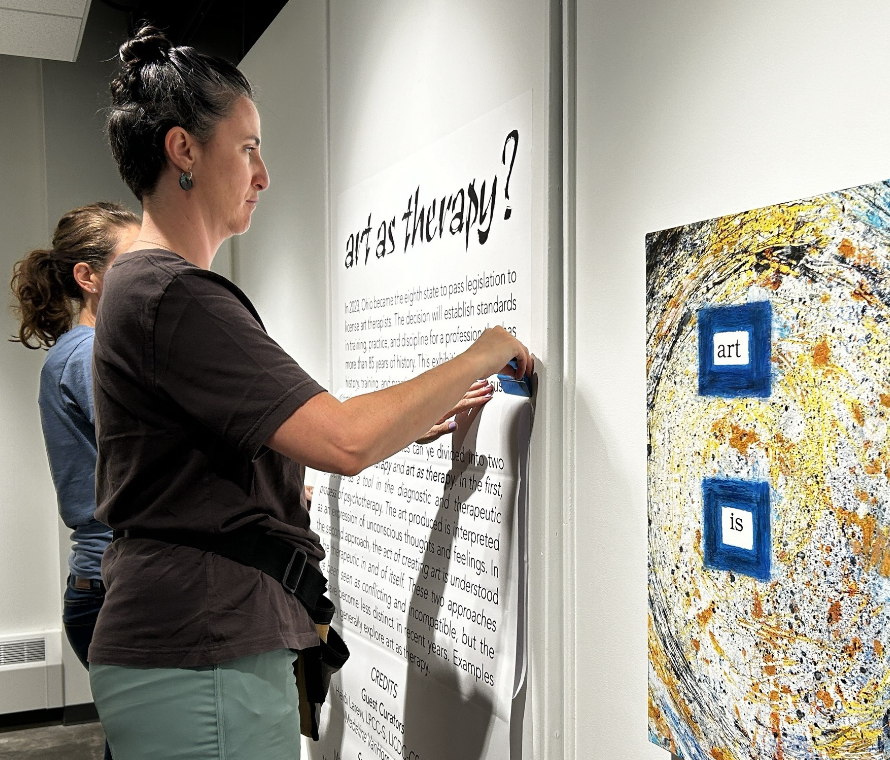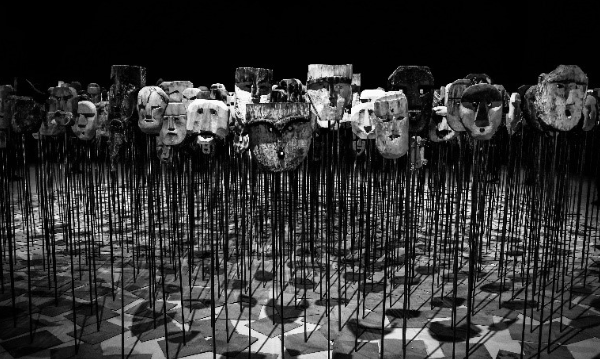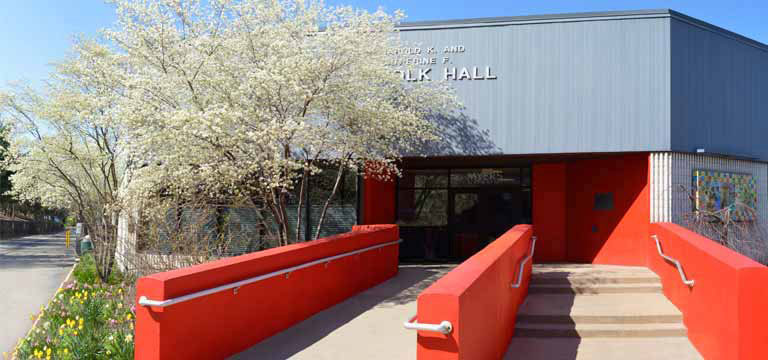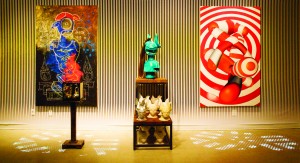
A barrage of exciting visuals, sound and interactivity are sparking the interest of students across campus as the Collider 4: Spectacle show opens this week.
Previously contained solely at Folk Hall’s Emily Davis Gallery, this year’s Collider show is branching out across campus. The hub of excitement remains at the gallery, but works can now also be seen at Beirce Library’s Emerging Technologies lab and at the Honors Complex.
“Collider is a show specifically about bringing together art, design and technology,” said Tony Samangy, one of three curators for the show. “The show also is intended to be interactive. That is since the very first Collider.”
Samangy’s piece, “You Are All Pixels,” interacts between its two installations, one located in Bierce Library, the other in Emily Davis Gallery. While students interact with the artwork in Bierce, viewers in Emily Davis Gallery are able to see how they are interacting.
Curator Markus Vogl explained that this year’s theme, “Spectacle”, was a deeper topic than magic shows or smoke and mirrors. Simultaneously, the theme operates in two contexts: that of low cultural shows that operate in a folk environment and that of high cultural performances, such as drama or movies, in which the audience experiences impressive visual accomplishment. Each event is memorable for the appearance and experience it creates.
“The spectacle itself is interested in mass spectacle . . . the direct interaction that we are bringing forth,” said Vogl. “[It is] much more interested in the actual spectator and what interaction creates for the spectators themselves.”
The collaboration between Vogl and Margarita Benitez, “VS,” (Versus) plays off of the idea of spectator sports (in this case, a game of eight-ball), interpreted through sound. Students were compelled to not only play on the billiards table, but to pick up billiards balls to investigate which colors made each set of sounds.
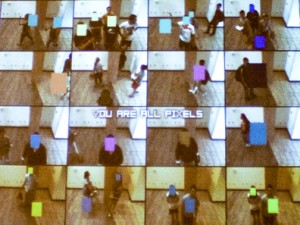
This year’s Collider show is also a testament to the growing ambitions of The University of Akron to collaborate between departments.
Tom Xiao, associate professor at UA’s Department of Computer Science and member of Synapse, collaborated with students and professors in the biomedical engineering and psychology departments to create Kinect-based computer games for biomedical engineering education.
This exhibition, “Viruses, Cells, Etc.,” can be seen in Emily Davis Gallery on Friday, April 6 and Saturday, April 7 and in Bierce Library’s Emerging Technologies lab Monday, April 9 through Friday, April 13.
Along with a number of UA faculty, several other artists have contributed to the show, including internationally renowned remix artist Mark Amerika; Margarita Benitez, fashion technology assistant professor at Kent State University; industrial designer Mauricio Giraldo Arteaga and others.
The dedication of the curators and artists for this year’s Collider show is obvious. Ever growing, it was a complex task to make sure that every project works perfectly and to set up works not only in Emily Davis Gallery, but also in other locations across campus.
“At any point in time, when you work with technology it is a humbling experience because it never goes exactly the way you want it to,” said Benitez, who was also a curator of this year’s show. “I think it’s really interesting that it’s not just in one location, but we’re stepping outside the Emily Davis Gallery to involve a larger community of the University.”
Collider 4: Spectacle is bound to inspire students and faculty alike. Many of the students crowded around works to watch others participate and interact. Some were taken off guard by the surprise of sound concentrated into streams they only noticed as they passed through them. Others touched and examined pieces of installments, trying to understand the mechanics of the mind-boggling collaborations.
“None of us are really computer scientists,” Benitez said. “We are more artists or designers coming into working with the technology, so sometimes you have to partner with people that know a little more in that field.
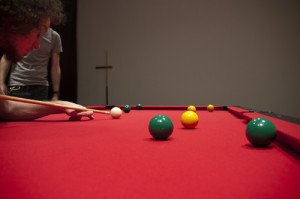
“Two of the coolest things to work with are processing, where you can create visual programs that do video stuff on your computer monitor, and to learn a little bit of arduino. That’s when you can connect the physical world into technology,” she said.
Eunsu Kang and Vogl both have courses that deal with these technologies. Kang teaches a number of classes involved with the interdisciplinary New Media minor, which encourages the participation of students of any major.
Kang’s installment, “Membranes,” can be seen at Bierce Library now through next Wednesday. Her piece, which is an environment itself, is also a dialogue on society and the acceptance of one another. Water, being a substance of neither rigidity nor oppression, flows around and moves with the bodies within it, which is a lesson that humans could learn from.
“This reflects what is happening in our society right now,” Kang said. “It is very relevant to the future of our students and the future of our society itself.”
The exhibition dates are March 19-April 13. Show events and detailed artist statements can be viewed at www.collider.co.


